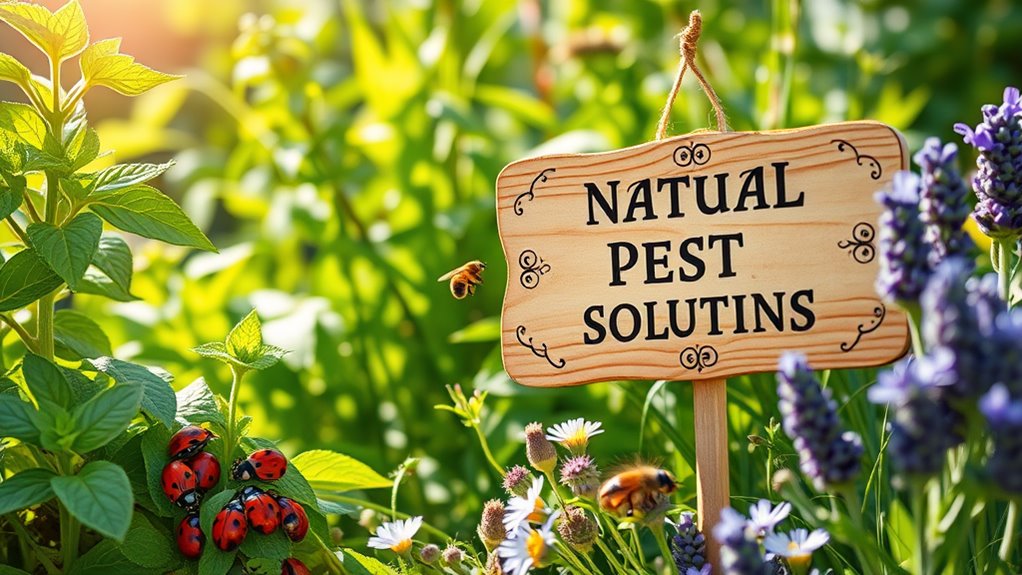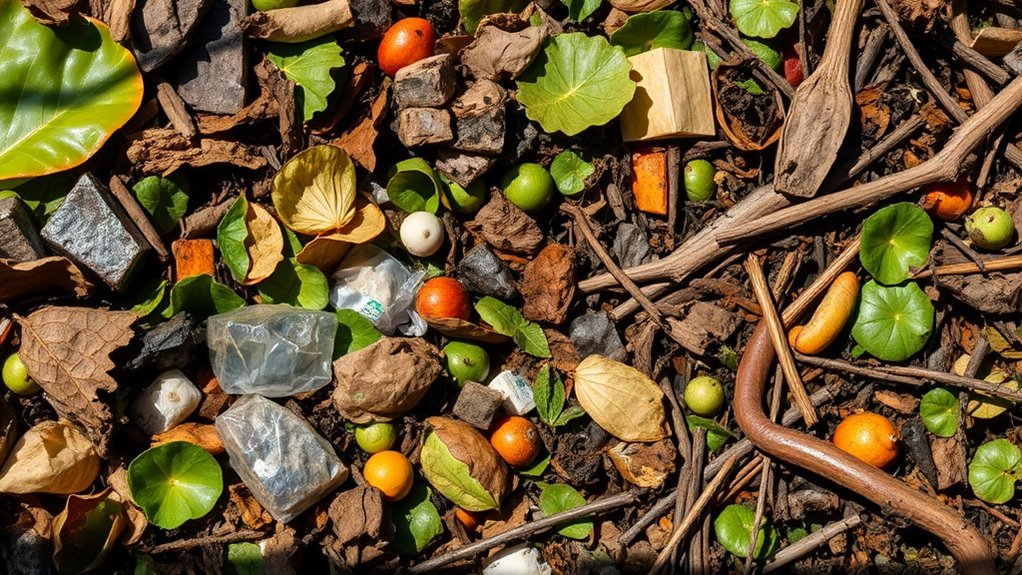Say Goodbye to Bugs- Natural Pest Solutions That Actually Work
When it comes to creating a harmonious living space, dealing with pesky invaders can be quite the challenge. Natural pest solutions offer effective alternatives to harsh chemicals, allowing you to maintain a balanced environment. By exploring essential oils, beneficial insects, and simple homemade traps, you can implement strategies that address infestations without compromising safety. Understanding the nuances of these methods will equip you with the tools needed to reclaim your space from unwanted guests.
Key Takeaways
- Utilize natural pest control methods to minimize chemical exposure and promote ecological balance in your garden.
- Implement natural repellents like citronella and eucalyptus to effectively deter unwanted insects.
- Encourage beneficial insects, such as ladybugs and lacewings, to reduce harmful pest populations naturally.
- Create homemade traps using sugar-water or cider vinegar to target specific pests without chemicals.
- Maintain good sanitation practices by sealing entry points and properly storing food to prevent pest access.
Understanding the Need for Natural Pest Control
Why should you consider natural pest control methods over conventional ones?
Natural pest control offers a sustainable approach, minimizing chemical exposure and promoting ecological balance. Unlike conventional pesticides, which can harm beneficial organisms and lead to pest resistance, natural alternatives utilize biological processes and organic materials. These methods often target specific pests, reducing the risk of collateral damage to non-target species. Additionally, natural pest control can enhance soil health and biodiversity, contributing to a more resilient ecosystem. Many natural sprays, such as those made from neem oil, are effective at repelling harmful pests while being safe for beneficial insects.
Essential Oils: Nature’s Insect Repellents
Essential oils serve as effective insect repellents, with certain varieties like citronella, eucalyptus, and lavender gaining popularity for their pest-repelling properties.
You can apply these oils through various methods, including diffusers, sprays, and topical applications, ensuring optimal effectiveness. Additionally, using these oils in combination with natural pest control methods can enhance their efficacy against unwanted insects.
However, it’s crucial to consider safety precautions, particularly regarding skin sensitivity and potential toxicity to pets.
Popular Essential Oils
Nature offers a range of potent essential oils that serve as effective insect repellents.
Oils such as citronella, eucalyptus, and peppermint are particularly renowned for their ability to deter mosquitoes and other pests.
Citronella contains compounds that mask carbon dioxide, a key attractant for insects.
Eucalyptus oil, rich in eucalyptol, disrupts insect sensory receptors, making it harder for them to locate hosts.
Peppermint oil not only repels but also has a cooling effect, which can enhance its efficacy.
Each of these oils possesses unique chemical properties that contribute to their repellent capabilities, making them valuable tools in your natural pest control arsenal.
Application Methods
To maximize the effectiveness of essential oils as insect repellents, you can employ various application methods tailored to your needs.
For topical application, dilute oils like lavender or peppermint with a carrier oil and apply them directly to your skin.
A diffuser can disperse oils like citronella into the air, creating a pest-repelling atmosphere.
Alternatively, mix essential oils with water in a spray bottle for easy surface treatment around your home.
For long-lasting results, consider creating sachets with cotton balls soaked in your chosen oils, placing them in areas prone to insect activity.
Each method enhances your defense against pests effectively.
Safety Considerations
When using essential oils as insect repellents, it’s crucial to prioritize safety to avoid adverse reactions.
Always dilute oils with a carrier oil to reduce skin irritation.
Conduct a patch test before applying widely, especially if you have sensitive skin.
Be cautious with oil quantities; excessive use can lead to toxicity.
Pregnant individuals and small children may require special consideration, as some oils can be harmful.
Store oils in cool, dark places, away from direct sunlight to maintain efficacy.
Lastly, consult with a healthcare professional if unsure about specific oils or potential interactions with medications.
Prioritize safety for effective pest control.
Diatomaceous Earth: A Natural Barrier Against Bugs
[Diatomaceous earth acts as a physical barrier against pests due to its abrasive properties, which damage the exoskeletons of insects.
You can apply it in various ways, such as dusting it in problem areas or mixing it into soil. While it’s generally safe for pets and humans, understanding proper handling and application methods is crucial to maximize its effectiveness. Additionally, using DIY bug spray can complement the effects of diatomaceous earth for enhanced pest control in your garden.
How It Works
How does diatomaceous earth function as an effective barrier against pests?
This natural powder disrupts insects’ outer protective layers, leading to dehydration and death.
Its efficacy lies in its unique composition and physical properties:
- Abrasive Texture: The sharp edges of diatomaceous earth scratch and damage the exoskeleton of insects.
- Adsorbent Nature: It absorbs moisture from the pests, accelerating dehydration.
- Non-toxic: Unlike chemical pesticides, it’s safe for humans and pets, making it an environmentally friendly option.
Application Methods
To maximize the effectiveness of diatomaceous earth as a pest barrier, knowing the proper application methods is key.
First, ensure the area is clean and dry; moisture reduces effectiveness.
Apply a thin, even layer directly where pests frequent, such as cracks, crevices, and entry points.
Use a duster or sprayer for precise distribution.
Reapply after rain or cleaning, as diatomaceous earth loses potency when wet.
Monitor the treated areas regularly to assess pest activity, adjusting your application as necessary.
Safety Considerations
When using diatomaceous earth as a pest control method, it’s crucial to prioritize safety for both humans and pets.
While it’s generally safe, you should take precautions to minimize any risks associated with its use:
- Avoid inhaling the powder; wear a mask during application.
- Keep diatomaceous earth away from food and water sources.
- Store it in a secure container, out of reach of children and pets.
Beneficial Insects: Allies in Pest Management
Beneficial insects play a crucial role in natural pest management, acting as powerful allies in the fight against harmful pests.
These insects, such as ladybugs, lacewings, and parasitic wasps, help maintain ecological balance by preying on or parasitizing pests that damage crops.
By introducing or encouraging beneficial insects in your garden, you can enhance pest control without harmful chemicals.
Monitoring populations and creating suitable habitats ensure their effectiveness.
Additionally, understanding the life cycles of these beneficial species allows you to optimize their presence, ensuring a thriving ecosystem that supports your gardening efforts while reducing reliance on synthetic pesticides. Furthermore, eco-friendly pest control methods can significantly enhance the effectiveness of these beneficial insects in managing pest populations.
Homemade Traps and Baits: Simple Solutions
While beneficial insects are effective allies in managing pests, homemade traps and baits offer additional, practical solutions for controlling pest populations.
These techniques not only reduce reliance on chemicals but also target specific pests efficiently.
Consider these options:
- Sugar-water traps: Attracts and captures fruit flies.
- Soap traps: Deters aphids and spider mites by suffocation.
- Cider vinegar traps: Lures and traps gnats and fruit flies. Additionally, using vinegar as a natural pest control solution can enhance the effectiveness of your traps.
Preventive Measures: Keeping Bugs at Bay
Implementing preventive measures is crucial for keeping pests at bay and ensuring a healthy environment.
Start by sealing cracks and crevices in your home, as these serve as entry points for insects.
Regularly inspect and maintain your landscaping, removing debris that attracts pests.
Install screens on windows and doors to create a barrier.
Additionally, ensure proper sanitation by promptly cleaning up food spills and storing food in airtight containers.
Monitor humidity levels, as excess moisture can invite unwanted guests. Consider using an organic pest mix to further deter pests naturally and effectively.





